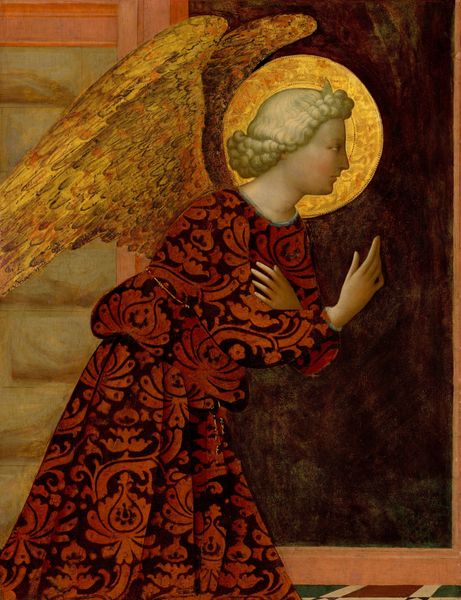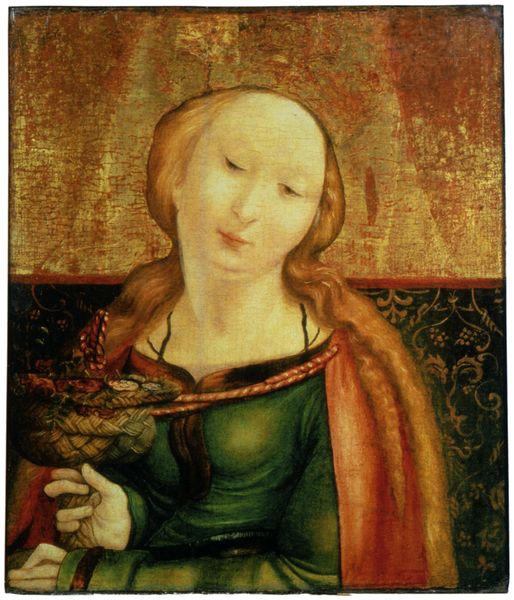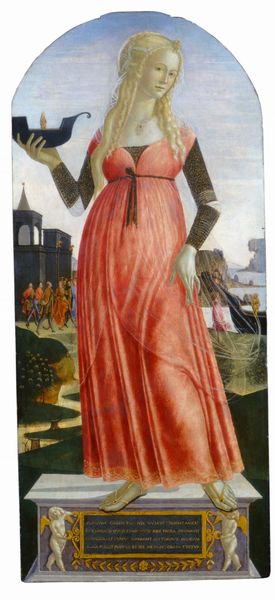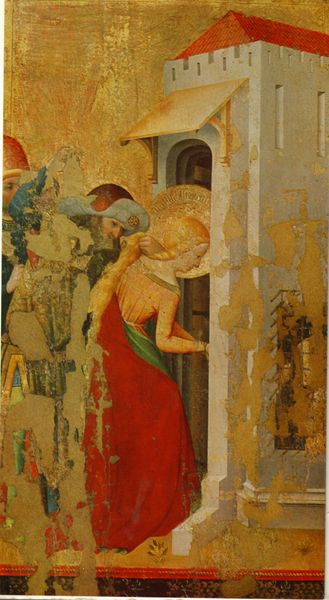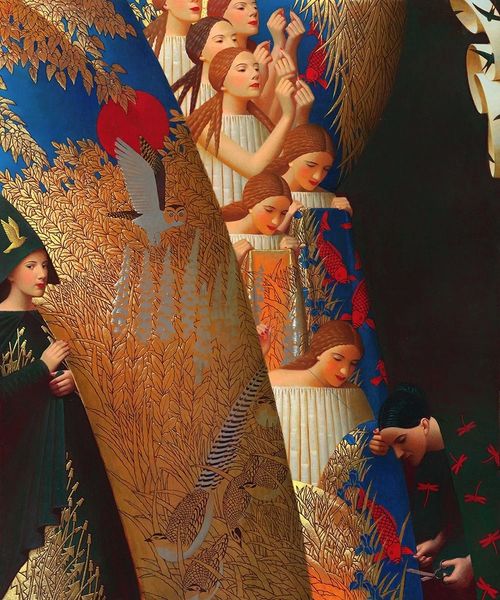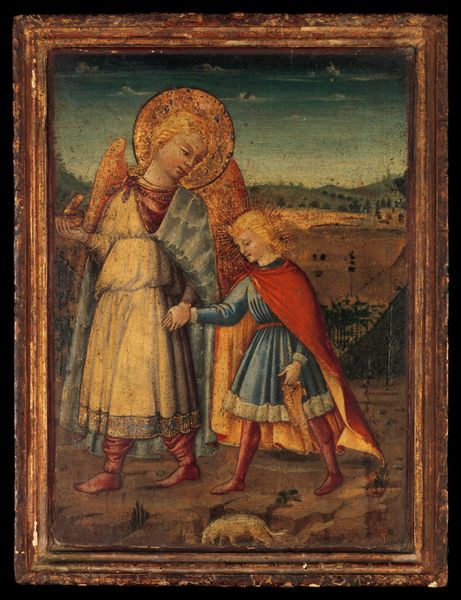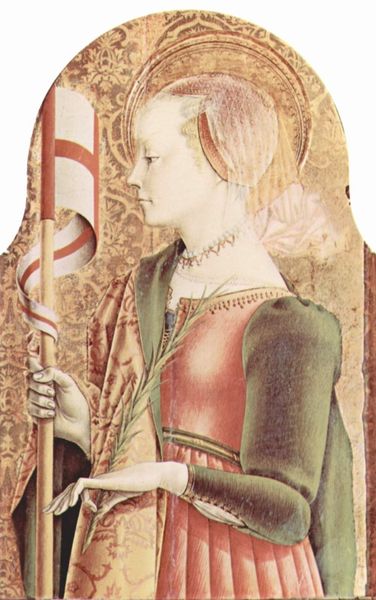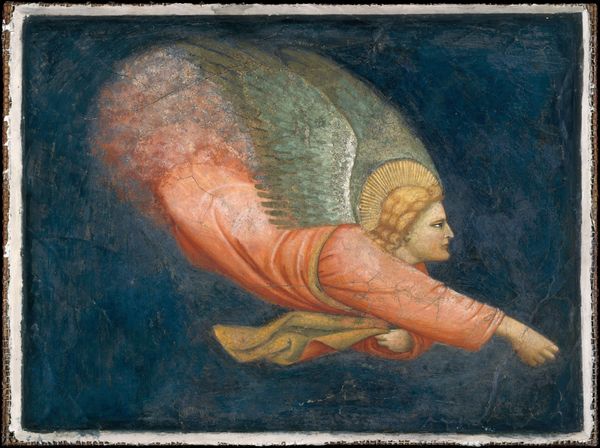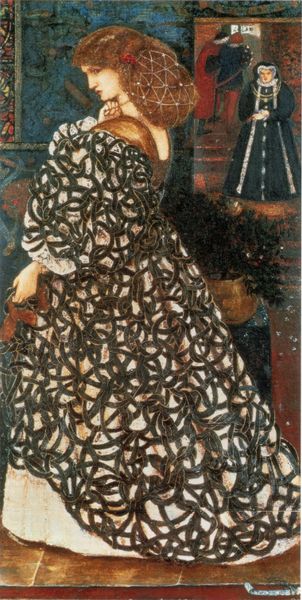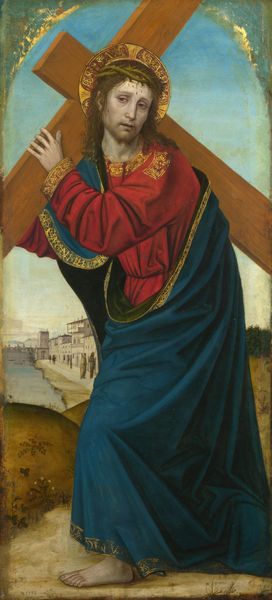
tempera, painting
#
portrait
#
allegory
#
tempera
#
painting
#
perspective
#
figuration
#
christianity
#
history-painting
#
academic-art
#
italian-renaissance
#
early-renaissance
#
miniature
#
angel
Copyright: Public domain
Curator: Here we have a detail from Fra Angelico's Annunciation, rendered in tempera paint. It epitomizes Early Renaissance painting in its attempt to depict sacred events with earthly, almost domestic tranquility. Editor: Wow, the immediate feeling I get is of this intense stillness—the quiet before something monumental happens. And the angel itself looks so... bashful almost? Like a kid who's been given a really important job. Curator: Indeed, and consider that Angelico, a Dominican friar, created this work—not in isolation, but within a religious framework dictating that art should uplift, instruct, and inspire piety. Editor: It's wild to think how artworks served such didactic functions back then. But this Annunciation, it isn't just hammering dogma. It also breathes something intensely human in that angel's gesture, how the hands fold in submission or even reluctance. Curator: Certainly, while serving as an altarpiece it needed to express theological themes. This scene from the Gospels, announcing to Mary that she will conceive a son of God, had immense weight within religious doctrine. Angelico also masterfully uses light to separate the celestial from the human sphere. Editor: It's interesting you mention the use of light because if you zoom in, you see this ethereal golden aura surrounding everything; the artist wanted the painting itself to glow with a light only an Angel could radiate! What always grabs me about Angelico’s works is how he could paint divinity with such intimacy. It’s devotional without being preachy. Curator: It speaks to the way artists could engage with their religiously sanctioned work. Even while adhering to prescribed theological subjects, there was latitude to communicate individual, subjective faith through painterly skill. The patronage system gave rise to an artistic tradition of balancing those sometimes contrary demands of institution and expression. Editor: Looking at art with its history pinned down…it's necessary. It deepens appreciation, adds context. But stepping back now, all that I feel is… a profound moment hanging, expectant. You feel included somehow; maybe invited. It is lovely! Curator: Well, thank you for these evocative reflections; they highlight how paintings, even those made centuries ago, can affect viewers profoundly when approached with a thoughtful eye and open heart.
Comments
No comments
Be the first to comment and join the conversation on the ultimate creative platform.
